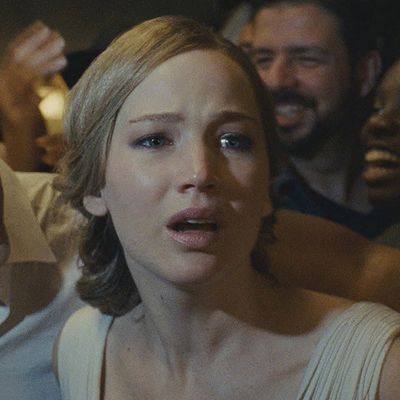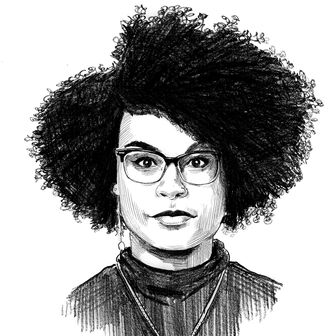
Since the early days of film, horror’s greatest strength has been its intimacy. A great horror film can slip under your skin, grab hold of your heart, and never let go. Due to this, horror is a genre that has often been defined and graded by the most personal of criterion: whether it scares you or not.
But recently, horror has been steeped in a trend sometimes referred to as “art-house horror,” or more gratingly “elevated horror,” that has seen the genre become more accepted by major stars and publications. These works put a premium on mood and detail, with few jump scares or none at all. They are defined by a more dramatic sense of unease roiling throughout the film rather than wall-to-wall gore. These glossy, austere works include Get Out, Mother!, It Comes at Night, Hereditary, and to a lesser extent, the new grim reimagining of Suspiria (which hasn’t been as easy to sever from the genre, given it is based on such a well-known giallo horror classic).
As horror has grown in scope, though, the mainstream conversation around the genre has narrowed. For Vogue last month, Taylor Antrim picked apart this year’s horror slate, including The Haunting of Hill House Netflix series, the quickly beloved new Halloween, and the Suspiria remake, because the slow pacing lacked “dark delight” and “intensity,” or because he wasn’t personally scared by them. A common complaint about the 2016, grimly construed period piece The Witch was that it was “not scary” enough. Filmmakers and stars have also distanced themselves from the genre. In the lead-up to his sharply construed, gut punch of a horror film Hereditary, writer-director Ari Aster admitted to ScreenCrush, “[E]ven from the beginning, and this is something I’ve said before but I was kind of careful to never really call it a ‘horror film.’ The people that were on the crew, or even the people that I was pitching the film to, I would describe it as a family tragedy that curdles into a nightmare.” And in a conversation with Jennifer Lawrence about Mother! last year, Seth Meyers said, “I feel like this movie is more disturbing than a horror movie.” Lawrence agreed, describing it more as “horrifying.” Darren Aronofsky himself continuously explained Mother! as Biblical allusion, global-warming metaphor, and basically everything but a horror film. He referred to it at one point as a “thriller,” a genre distinction that seems especially created so filmmakers and marketing departments can distance themselves from horror.
This phenomenon isn’t new — it has ebbed and flowed through the history of the genre. For as long as horror has compelled audiences, filmmakers and more high-minded critics have twisted themselves into knots to avoid describing so-called highbrow movies as “horror.” In Men, Women, and Chainsaws, Carol J. Clover details the conversation around the release of the 1960 Michael Powell film Peeping Tom. It’s a brutal and magnificent film that uses its central serial killer to present a theory about the nature of what it means to be a “cinematic spectator.” Clover writes, “Powell especially objected to the reception of Peeping Tom as a horror film akin to the gory ‘Hammers’ on the British market during those years.” Powell resolutely claimed Peeping Tom wasn’t horror but “a film of compassion, of observation, and of memory, yes! It’s a film about the cinema from 1900 to 1960.”
For the first issue of the recently revamped Fangoria magazine, writer Michael Gingold discusses what it was like to interact with distributors in the ’80s and ’90s who purposely avoided horror labels, while writing for a publication that wears its love of the genre, in all its forms, with pride. “The denial of the horror was particularly pronounced when it came to the flood of films about disturbed or psychopathic individuals in the wake of 1987’s Fatal Attraction and 1991’s The Silence of the Lambs (which was not widely acknowledged as a horror film during its initial release as it is now),” he writes. Even though many of these films rely on the “fear factor” and starred “a damaged individual threatening and terrorizing other characters [that] was essentially the same as in Psycho, Halloween, or slashers, these were, apparently not horror films.” With New Line Cinema refusing to set up interviews at Fangoria with the people involved with Se7en — despite it being, as Gingold describes, “one of the most horrifying movies released by them or anyone else in the ’90s” — the publication had ample opportunity for its recurring banner: “It’s Not a Horror Film!”
What perhaps separates the current moment from these earlier examples is that horror is being embraced by A-list talent on a more regular basis. When stars are typically in horror films, we associate that with either the early moments in their career before they were famous (think Jennifer Aniston’s appearance in the Leprechaun franchise) or when their standing was dimming in Hollywood (consider Bette Davis and Joan Crawford in What Ever Happened to Baby Jane? — which spawned the hagsploitation genre and saw many queens from classic Hollywood using horror as a jumping-off point for a new audience). But recently, horror has attracted prestige more consistently, particularly since Jordan Peele’s megasuccess Get Out. The stars are brighter and more renowned (Lawrence in Mother!, Natalie Portman in Annihilation). The productions feel moneyed, with better design and a glossier budget for marketing. I think most importantly, there is an ongoing conversation in horror cropping up in publications and circles that would usually not give the genre the intellectual study. “Critics and cinephiles in general tend to dismiss genre cinema wholesale, and genre fans as well, and seeing members of the community react to these films with such violent negativity only reinforces their image of the ‘horror fan’ as a slack-jawed dullard whose only interests are sex and gore,” Jason Kauffman astutely wrote for Medium, about the tense dynamics surrounding “art-house horror” films like The Witch, in which some die-hard horror fans dismissed the film as “boring” and not for “true horror fans.” “There are as many definitions of ‘horror films’ as there are people who watch them.”
Perhaps this collision of so-called high and low culture is what leads to this distancing effect. And one of the driving forces behind this infuriating dialogue is the difficulty in defining horror as a genre. Tying a film like Candyman or even The Silence of the Lambs to schlockier fare like The Nightmare on Elm Street franchise isn’t hard, but trying to link all these works to something like Annihilation proves more difficult, since it shirks the markers people associate with horror (a central villain, gore, its particular archetypes) for something more difficult and beguiling, while also being indebted to science fiction. Ever since I fell in love with horror as an awkward, curious preteen, I have understood its shape-shifting quality as a genre. The first two entries in the Hellraiser franchise are grim and immensely sexual works primed for gorehounds; Tales From the Crypt is uproarious and arch; Candyman carries the tenor of myth and is shot through with a strange romanticism; Buffy the Vampire Slayer didn’t only cement my interest in feminism, it taught me the ways modern filmmakers can lean into and subvert the iconography of horror. Horror can be a beautiful genre that elucidates our darkest fears and our most taboo desires in ways that are meant to scare us, yes, but it’s also expressed in so many different ways — the roiling dread of Nosferatu, the quip-laden joyous terror of Scream, the beguiling romanticism and fear that is braided together in Candyman, the garish spectacle of Tragedy Girls — that can be hard to peg down.
Despite the genre’s flexibility, I think what links all of these works is not how much they “scare” you, but the underlying sense of fear, and the exploration of this primal response on personal, cultural, and existential levels. If you look at the recent crop of films — even those that have been questioned — they all use fear as a framework to shape the characters’ lives and guide deep concerns about the world we live in. Hereditary and The Babadook potently explore women’s complicated relationship with motherhood. Annihilation continues the concern of horror films like The Thing in how it uses the idea of our bodies being invaded and shaped by strange forces, in order to explore loneliness and depression. Mother! is a bonkers mythological story about the fear of our most private spaces being invaded and destroyed. This is different from the goals of filmmakers to unnerve and scare audiences, but more about how they approach questions such as these: What fears are shaping our culture? How does fear shape the lives of these characters?
I can’t remember the last time I was scared watching a film — I’ve been a bit desensitized over the years, watching Hellraiser at 10 will do that to you — but recent films like Annihilation, The Witch, and Under the Shadow still do what horror does best: provoked a deeper response that forces you to consider and understand how fear shapes our lives in ways personal and cultural, intimate and inescapable.





